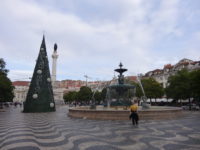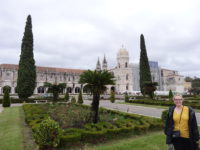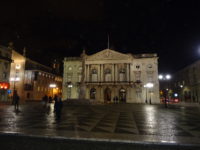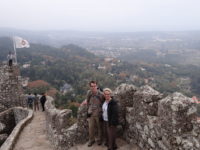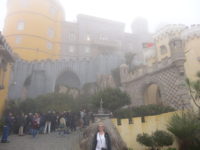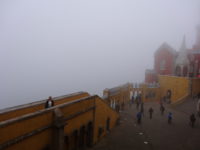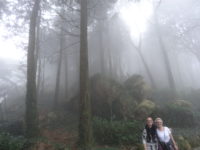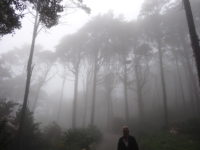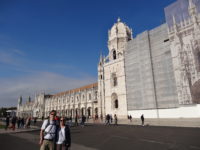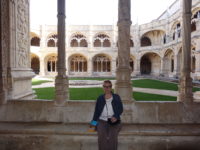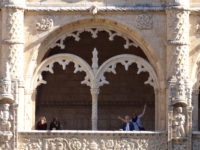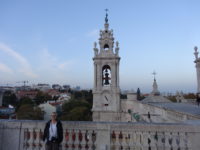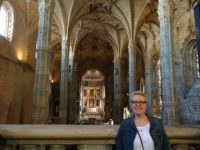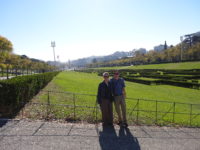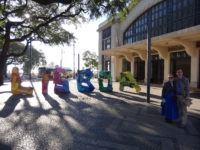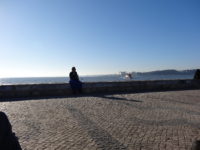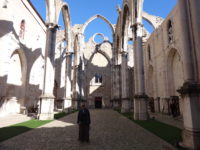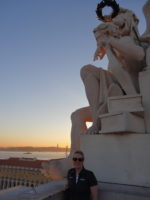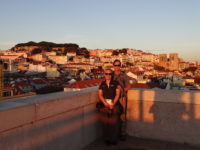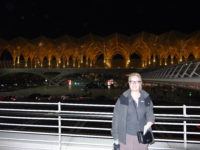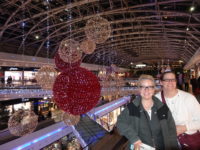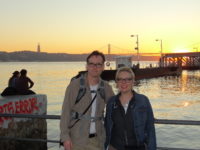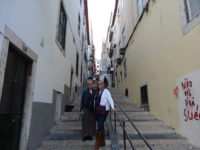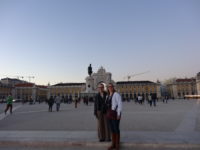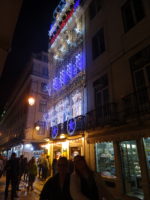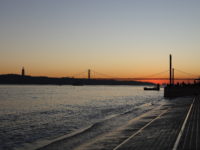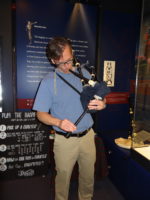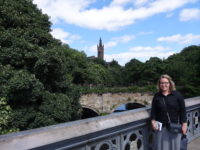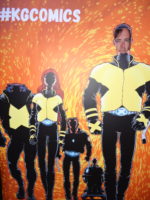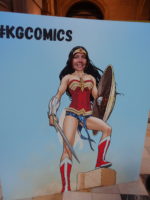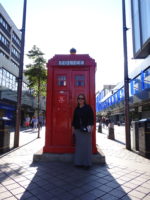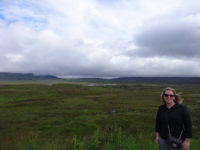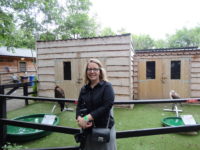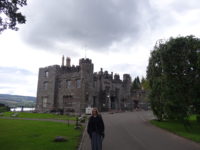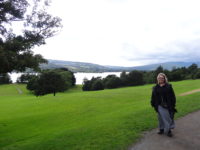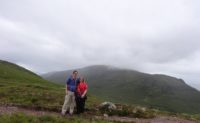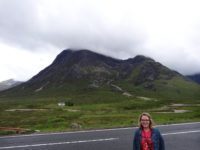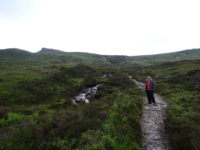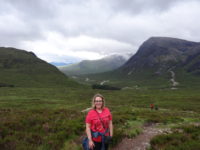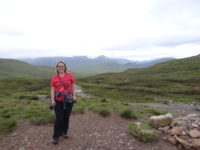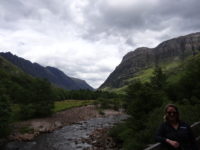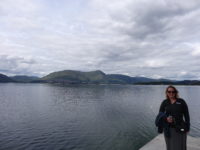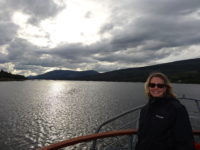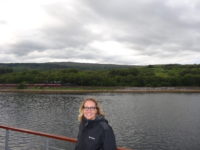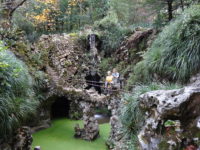 One of the reasons to travel is to discover things of wonder. That wonder can be natural (like the Alps) or artificial (like the Eiffel Tower). Even better is when you find something that captivates you that you never even knew existed. Especially when it is wonderfully quirky.
One of the reasons to travel is to discover things of wonder. That wonder can be natural (like the Alps) or artificial (like the Eiffel Tower). Even better is when you find something that captivates you that you never even knew existed. Especially when it is wonderfully quirky.
Such is the Quinta da Regaleira house and estate in Sintra. It was mentioned in our Rick Steves guide book, and online reviews said it was fantastic, but nothing really prepared me for the actual site. We took the train back to Sintra, where the Moorish Castle still played peek-a-boo with us through the fog and we only saw the Pena Palace tower dimly right at the end of the day. So, still not a great day for views from the mountain.
But, happily, the town of Sintra and the Quinta da Regaleira were both below the cloud line, and it was a nice day to be outside. We spent about five hours roaming the grounds and (briefly) the house, so we were happy the rain from Thursday had gone.
 We walked from the station to town, which involves walking around a steep valley, so that you actually see the town close at hand the entire walk. The sidewalk is lined with sculpture, which is a good touch. The Quinta da Regaleira is above the town, so we continued our walk to the main gate, which is about halfway up the sloping grounds of the estate.
We walked from the station to town, which involves walking around a steep valley, so that you actually see the town close at hand the entire walk. The sidewalk is lined with sculpture, which is a good touch. The Quinta da Regaleira is above the town, so we continued our walk to the main gate, which is about halfway up the sloping grounds of the estate.
And what grounds. We decided to head up while our legs were fresh. Not long into the uphill walk, we came to the waterfall on the estate. With a pond. With stepping stones across the pond. Which led to the underground passage that led behind the waterfall. That led to the underground passage that led to the “Initiatic Well,” a spiral-staircase-encircled well about ninety feet deep. But halfway up the stairs there was another underground passage that we HAD to take.
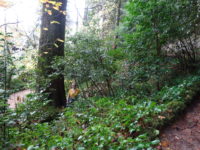 This dumped us out at the “Portal of the Guardians,” a semi-circular wall with two climbable towers on either side. That overlooked the “Terrace of the Celestial Worlds” with its tall ziggurat tower. That you can climb and see the Moorish Castle from.
This dumped us out at the “Portal of the Guardians,” a semi-circular wall with two climbable towers on either side. That overlooked the “Terrace of the Celestial Worlds” with its tall ziggurat tower. That you can climb and see the Moorish Castle from.
But we were climbing up. So up we went, along winding paths through dense trees to the Grotto of the Virgin, a cave currently without a shrine. That marked the highest point in the estate, so we followed the western wall path down before heading over to the Unfinished Well, which also had stairs leading down, to the (obviously) underground passage that led to the Grotto of the East, another cave, near the Aquarium, a cave with one wall of glass to let the viewers see the water on the other side (fairly tame in late November).
 That finished the upper half of the grounds. We made our way down to the lower half, finding and climbing the quite tall Regaleira Tower with its grand views of the Moorish Castle and the town of Sintra. We had to backtrack there a bit to find a way down to the Fountain of Regaleira, which was a huge wall of mosaic stone with a super-small fountain with the output of about what a drinking fountain would put out. It was fun in that way.
That finished the upper half of the grounds. We made our way down to the lower half, finding and climbing the quite tall Regaleira Tower with its grand views of the Moorish Castle and the town of Sintra. We had to backtrack there a bit to find a way down to the Fountain of Regaleira, which was a huge wall of mosaic stone with a super-small fountain with the output of about what a drinking fountain would put out. It was fun in that way.
Back to the western wall path, only to be distracted by the Labyrinthic Grotto, my favorite part of the park. It was an opening leading to a series of narrow passages that wound around. Some of the paths led to other paths, and some were dead ends. They finally came to a huge muddy cave that looked out onto a small pond. Happily, there was a stairway out, next to the Balnearium Fountain and a small “natural” bridge across the pond. After crossing it, we made a quick dash over to look at the decoratively tiled Pisoes Loggia, and then a beeline toward the cafeteria for lunch, taking us past a row of statues of Greek gods.
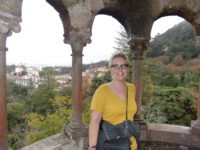
Lunch was outside on the patio, looking over the house and grounds and mountain, with a couple of different kitties wandering about. That is about as ideal an eating spot as you can come up with. After lunch, we went and visited the ornate Chapel, where we climbed a spiral staircase to its small balcony, before climbing it back down all the way to the…wait for it…underground tunnel that took you to the base of the house.
We toured the first floor of the house, with its magnificent views, but sadly, the second and third floors were closed for restoration, so we did not get to climb up to the balconies. We did spend some quality time sitting out on the main floor balcony, watching the fog come and go on the mountain.
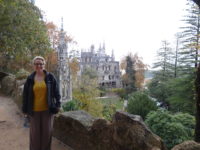
To make sure we saw everything, we finished off the row of Greek gods. That was it. A very well-spent five hours of child-like wonder.
Why is all of this here? I’m not sure. The brochure tells you how Carvalho Monteiro hired architect Luigi Manini around 1900 to expand the house and grounds, but does not say why. Some of the things in the house suggested there was an ideal of a “philosophical estate” where nature and contemplation were stressed, but it never really got to the why of the entire place. I think Carvalho had money and imagination and playfulness. I am very grateful – what a great place to wander and wonder.
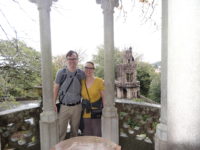
We took the train back to Lisbon, and then home to rest for forty-five minutes. We wanted to explore more of the Alfama neighborhood (the old one that survived the 1755 earthquake), so we had a relaxed supper up there, where we had a good time with a fun waiter who gave us a hard time, and then we chatted with a Korean man who lives in New York doing graphic design for commercials. We then wandered the narrows streets up to and back down from the castle area, before walking over to the upper shopping district for dessert, where we finally got to see some Christmas lights. The municipal lights have been hanging all week, but haven’t yet been lit. Happily, the mall came through for us with a spectacular color-changing tree. After dessert, we headed home, but sadly, not through any secret tunnels.
